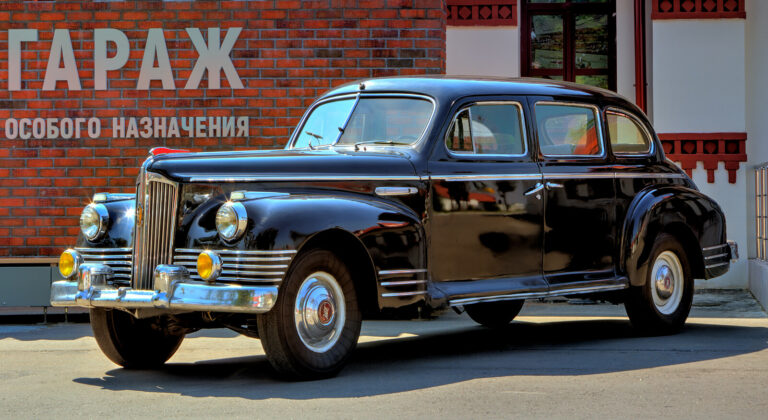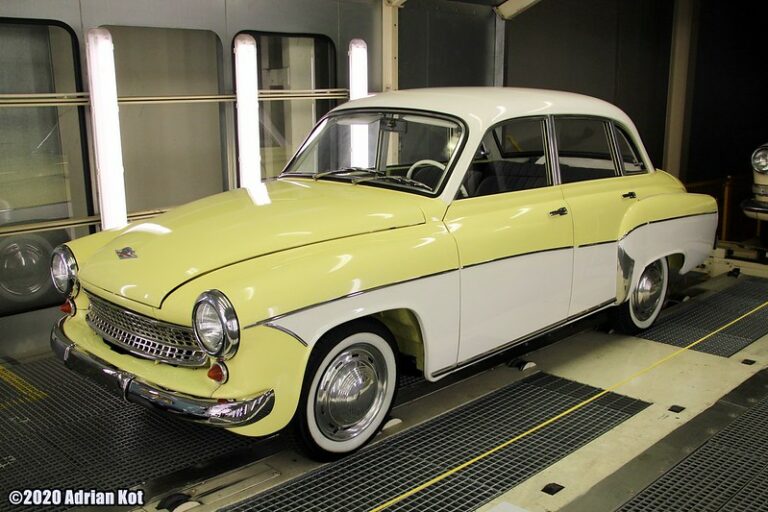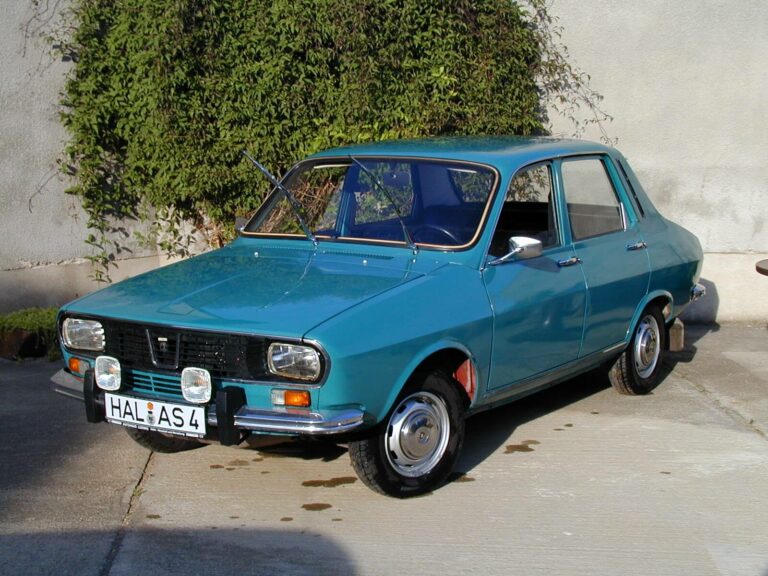1957 - The Moskvitch 402
The 402 made its debut in 1956 as the first Moskvitch model to be designed in the Soviet Union and not based on a foreign model. Its shape followed the fashion of the time and a number of variants were produced, depending on its use. There were versions for the disabled (402B), medical transport (402M), taxis (402T), and even a four-wheel drive model with a 15 cm lift (410) was produced between 57-58, which was the first Soviet crossover. The 425 mentioned in the title, on the other hand, did not exist; the author was probably referring to the 423 station wagon of 1957.
The 402 was produced until July 1957, and more than 18,000 of the 94,080 units produced were sold abroad.
The following article, in full, appeared in the 15 February 1957 issue of Autó-Motor, and was not signed by its author.
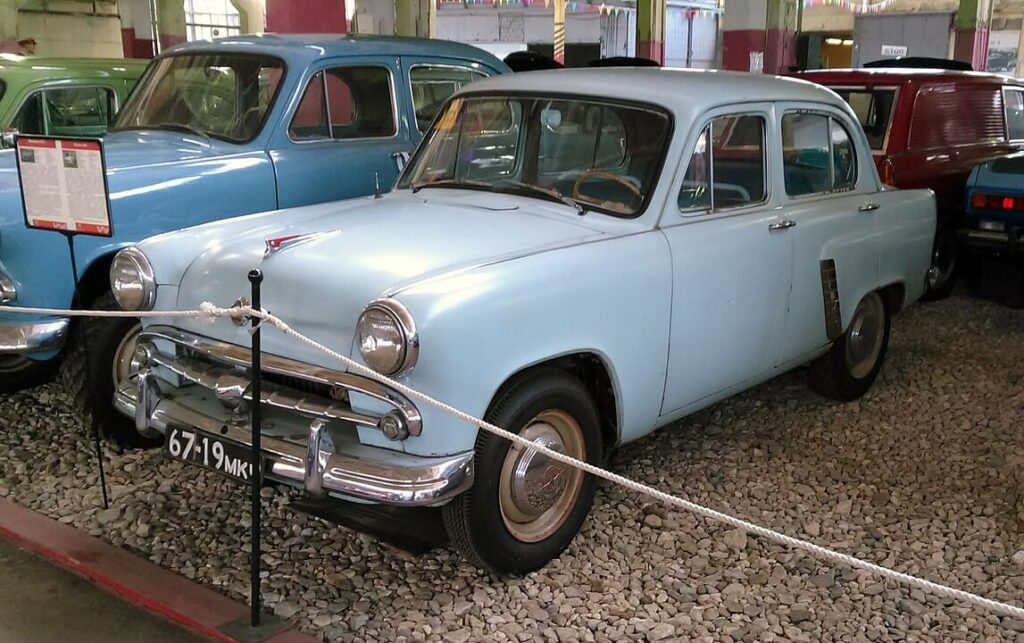
The Moskvich-402 at the Moscow Transport Museum. Image source: wiki / DL24
♠
Mosskvich 402/425
We test drive every type of car, of which there are several in operation in the country, for a longer or shorter period of time to give our impressions. Most recently, we have tested the new Moskvich 402-425 to gain some experience.
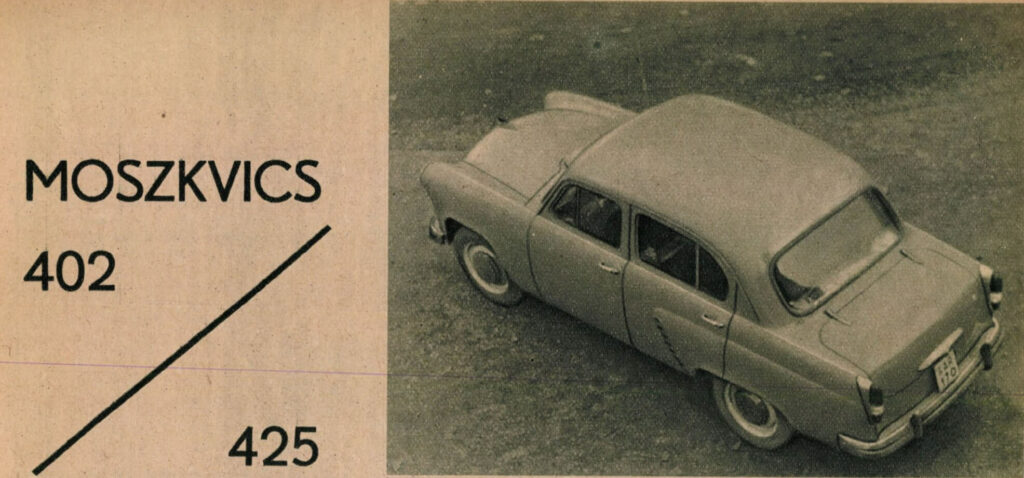
The trial was conducted in two phases. First with a raw car that had only been run for a few kilometres, and then with a car that had been properly run-in. The first findings were that this type of car is undoubtedly suited to the conditions of domestic traffic. It has the right ground clearance, suspension, and the simplicity of its construction makes it easy to repair over time. The carriage provides a comfortable, economical ride for four people. The new Moszikvich can definitely be classed among the small cars and mid-size carriages that can be called modern today. Its self-supporting body-on-frame, its practical and well-designed nose, its large curved windscreen and rear window, and its substantial luggage compartment all prove that the car's designers have kept modern requirements in mind.
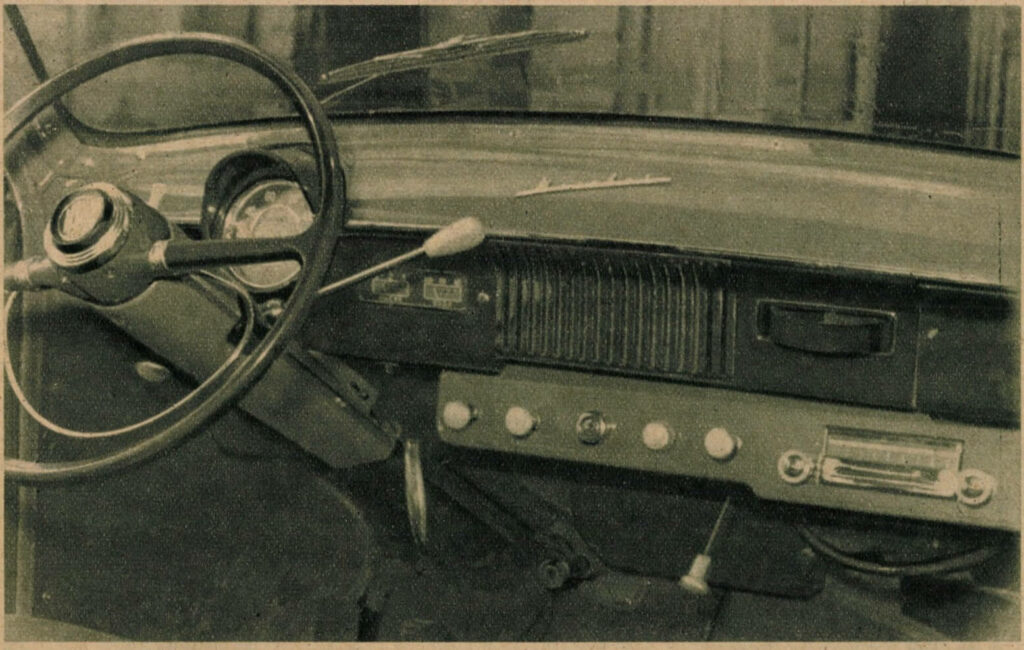
Text accompanying the image: the steering wheel is smooth, simple and easy to steer. Pull the semi-circular, shiny 'third hand' under the wheel towards you and the horn sounds. The turn signal switch is placed at the steering head, in the palm of your hand, it drops and even jumps back automatically. The speedometer's shade is right in front of you. Separate gauges display information on battery, petrol, oil pressure and water temperature. And when changing gear, pull the lever towards you, towards your knees - you're in first gear. Reverse is up. Second gear is up when the lever is pushed in the direction of the fitting wall, while third is in this plane but again in the direction of the foot. Shifting is easy, simple. The entire dashboard is purposefully designed, with only the radio's station finder knob in a position where it sometimes turns at the movement of the front passenger's knee. The heating and ventilation of the carriage is very good.
These, we believe, are gifts that are visible from the outside. But in order to know their driving characteristics, you have to get in the car and drive it on different roads at different loads and speeds. Who wouldn't want to get into a new car and get to know it?

If you're in the mood - and for now you'll be content to just join us via the newspaper - take a short test drive behind the photographed steering wheel.
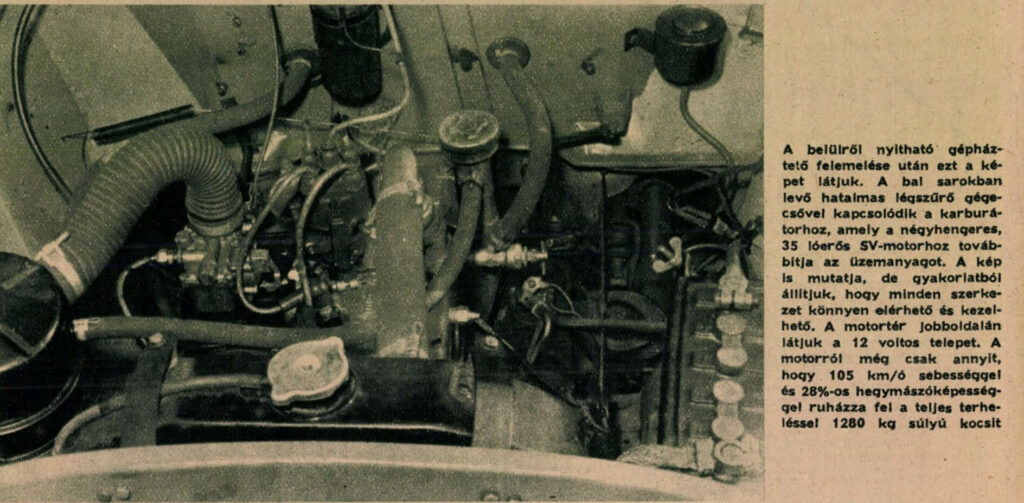
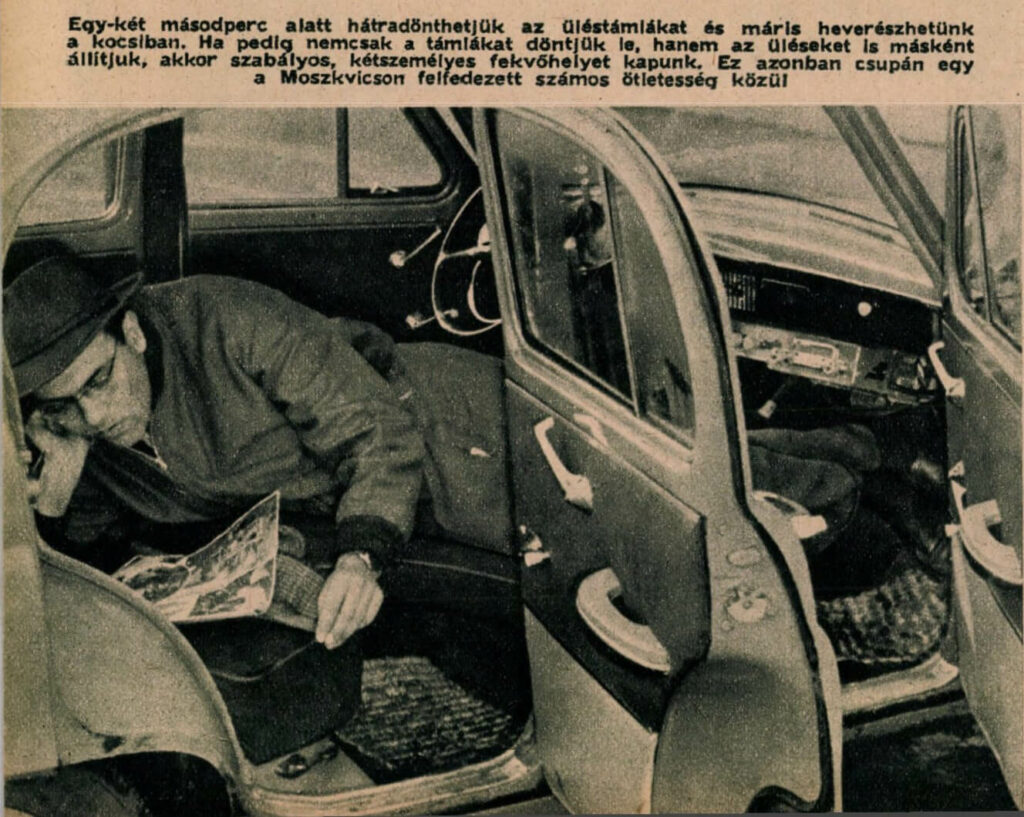
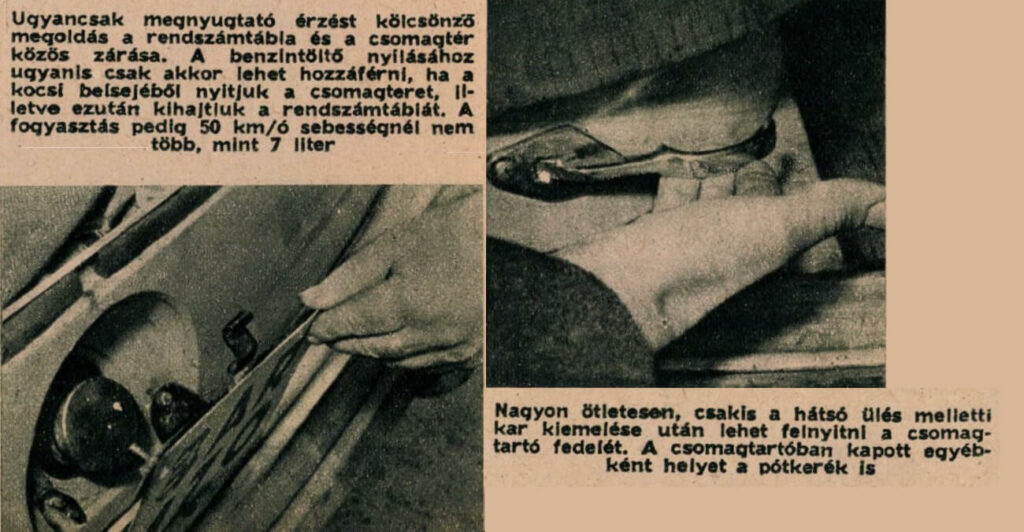
♠
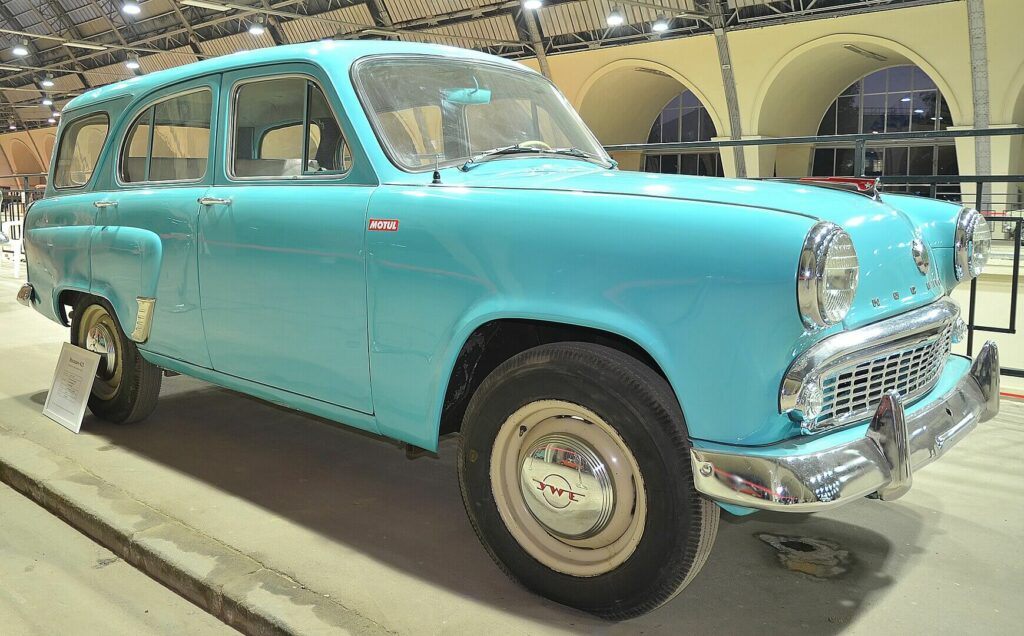
Moskvich-423-kombi-1957 Image source: wiki / Sergey Korovkin 84
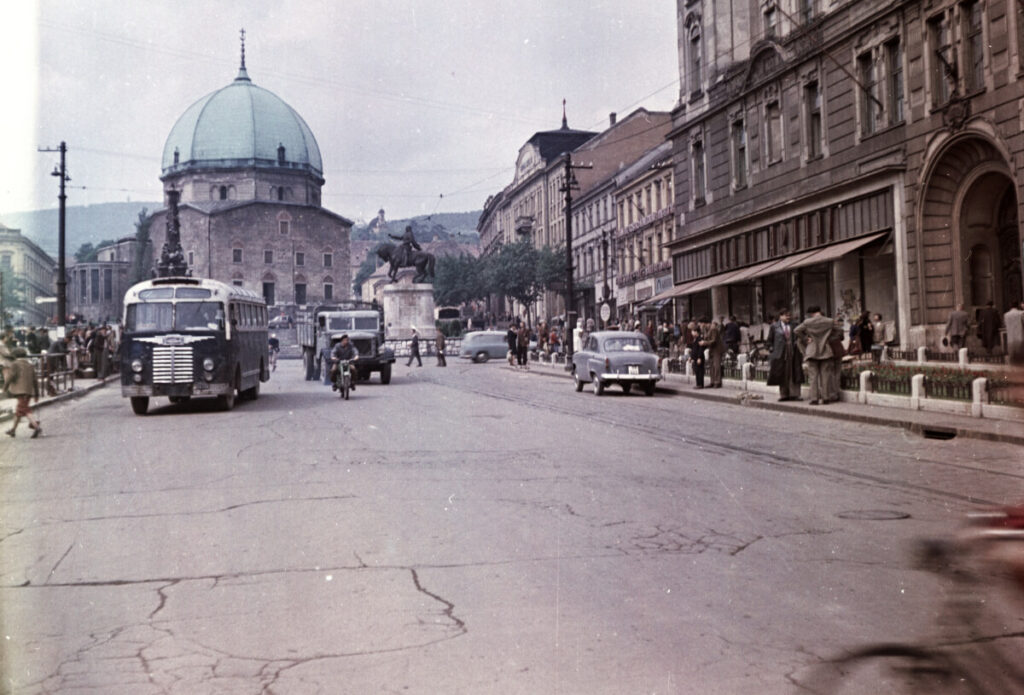
Pécs, 1958, Széchenyi Square, in the distance in front of the Jami the statue of the Holy Trinity and János Hunyadi, to the right the Town Hall. In the picture an Ikarus-30, a 350 Csepel and on the right side of the picture, with a 402 Moskvich behind. Image source. Documentation Centre / VÁTI
